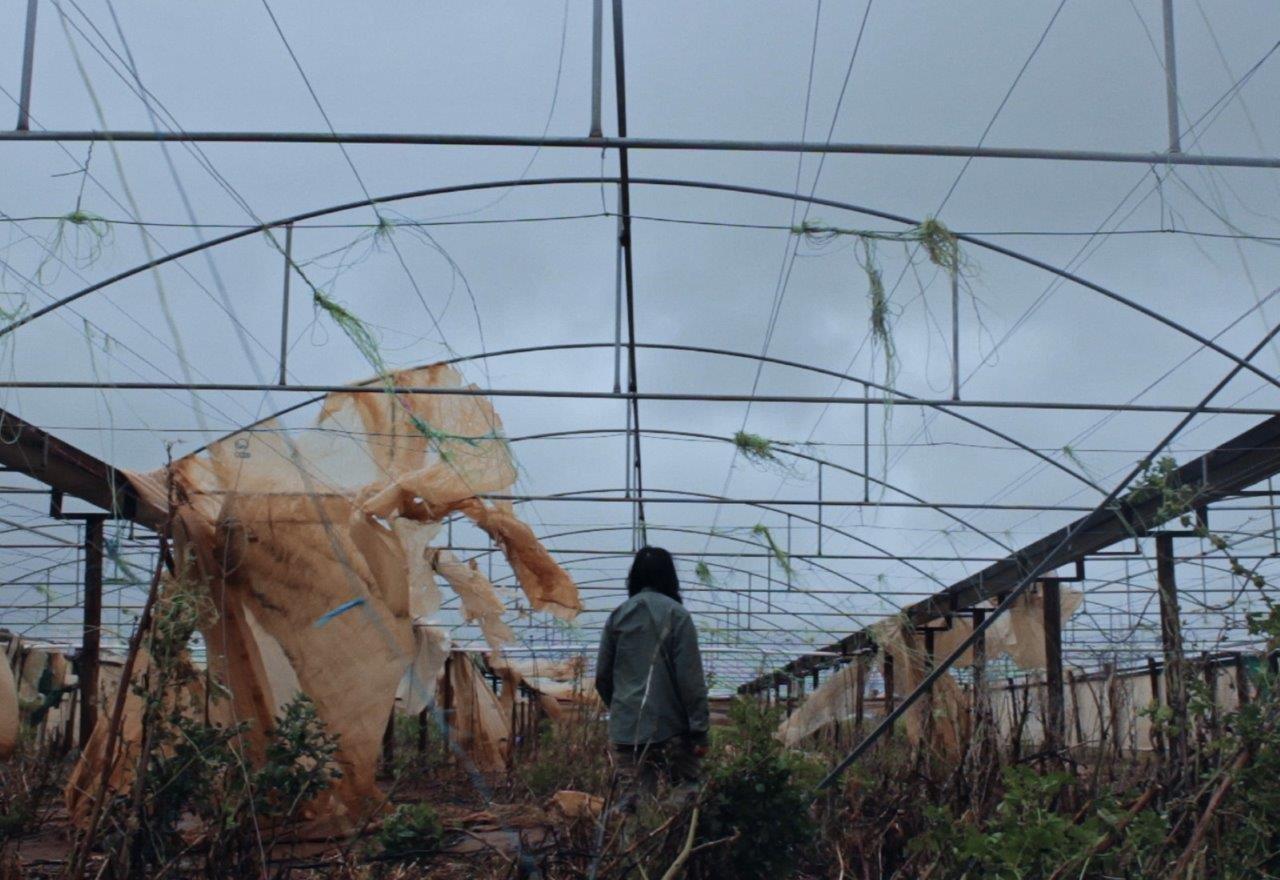I was halfway through The Plastic House before I realised there hadn’t actually been any dialogue yet. The last time I watched a documentary like this, I was not a fan, but with this documentary, I found that wasn’t an issue.
The Plastic House follows writer/director Allison Chhorn as she contemplates what life might be like without her parents. What would she do? How would she feel? How would she grieve? The film – which has been labelled in places as ‘experimental’ – is fantastic.
The cinematography is most impressive, with each shot, I felt more in touch with what the filmmaker was trying to say.
The Plastic House opens with a simple haircut, almost surely signalling a need for change. Then the cemetery – signalling that to achieve change – one needs to grieve. As Allison works her family’s greenhouse, new life begins. But it’s not all roses and sunshine. There are cracks in the walls. Both literally and figuratively. And intentional or not, I really felt that the cinematography depicted the emotion that Allison was feeling very well. It kept me invested in the film from start to finish.
The Plastic House might not be your everyday documentary – hence the experimental label – but it is beautifully conceived and wonderfully executed. Allison Chhorn is a brilliant talent, with a bright future.

Hear from Allison as she talks about the making of The Plastic House below:
How was the concept for the film conceived?
The concept really came about from my own experiences living and working in the greenhouse and farm that you see in the film. As I mentioned in other interviews, the main fictional element is the imagined passing of my parents, who are still alive. Although I haven’t had anyone very close to me pass away, whenever I would hear a distant family friend or someone I loosely knew pass away, I imagine what it must be like for their close family and friends and feel a great sadness just by hearing the news. So, the film is based on this fear of knowing my parents will no longer be here one day and the fear of the roof of my house falling down.
What inspirations did you have for the film?
In the scenes of the bedroom, you may see stacks of DVDs, CDs and books. I really take inspiration from everything that I watch, read and listen. At the time I was really into Chantal Akerman, Tarkovsky, ambient music and William Faulkner. One of my main inspirations was a film called “Syndromes and a Century” by the Thai filmmaker Apichatpong Weerasethakul. He has a way of seeing the architecture of a space and turning natural settings into something mysterious and ethereal.
What inspired the style (no dialogue)?
Having no dialogue (or using it sparingly in moments of flashback memories) reflects my relationship with my parents. Because I can’t really speak the Khmer language, I usually end up just listening and responding in basic English, just enough so that they’ll understand. I’m also very used to being alone, which maybe makes you more attuned to certain things and more perceptive to the environment around you.
How did you decide what shots you were going to use?
I think being in the space where your shooting really helps you to see what kinds of shots and scenes could be filmed, both practically and creatively. So it was easy for me to imagine the scenes while I was working in the greenhouse. It’s really during editing that makes you objective enough to decide which scenes should be kept and which ones just doesn’t work in context.
It’s a powerful, but simple concept, and you are responsible for nearly every aspect (directing, producing, composing etc) – was it hard work?
It can be a lot of work, but I’m really interested in every aspect of filmmaking and bringing it all together, even though I may not be technically proficient in all areas. It’s similar to working as an artist (painter, photographer, etc.) where you do a lot of the work yourself.
However, I did have the film graded by Nicholas Hower and sound mix done by Carlos Manrique Clavijo, which gave the film a professional finish that I couldn’t have done myself. Even though he came on board at the tail end, it’s really the work of my producer Chris Luscri, who is the reason why the film has been playing festivals and getting seen.
How long did you film for?
Most of the shooting was done in the winter of 2016. But as you see in the film, there were also different times and weather situations when it was filmed during the year. Because I lived there and had access 24/7, I filmed whenever I felt the timing was right.
How much footage did you end up with, was editing a difficult process?
It’s hard to say exactly how much footage I ended up with, but with every project, you end up using only a small portion. Sometimes I’ll shoot for specific scenes and other times I’ll shoot for a long time without a specific purpose; for example, there was a lot of driving footage. So the editing was where it really came all together, but that also took a long time.
What did you feel during shooting? How do you feel now seeing the film released?
Since I was working alone most of the time, I really felt free to do as many takes as I wanted and wasn’t afraid to make mistakes. It was a very solitary experience. Now that the film is released, it does feel a bit strange knowing other people are watching this lone figure. Occasionally, people will tell me how they’ve related to this film in their own personal way, creating a sense of connection without ever having known this person before or even seeking it out.



